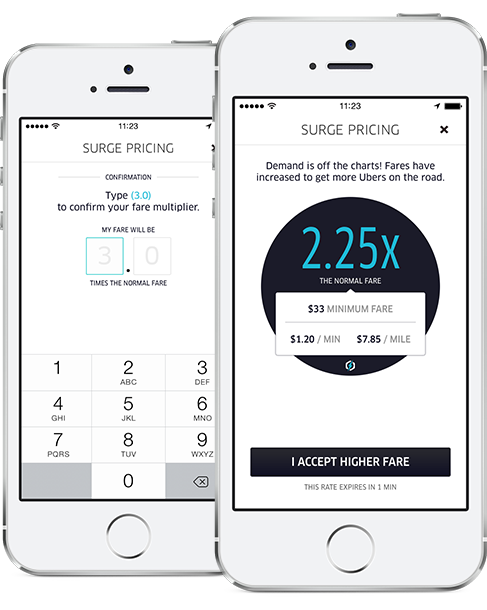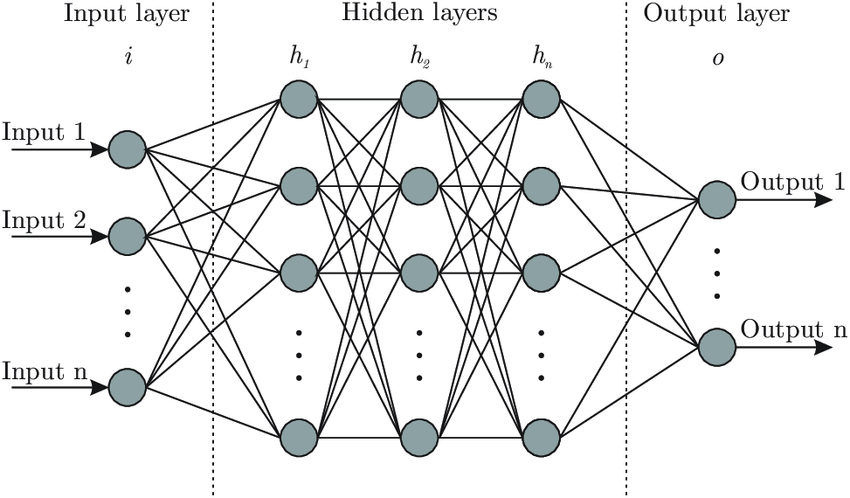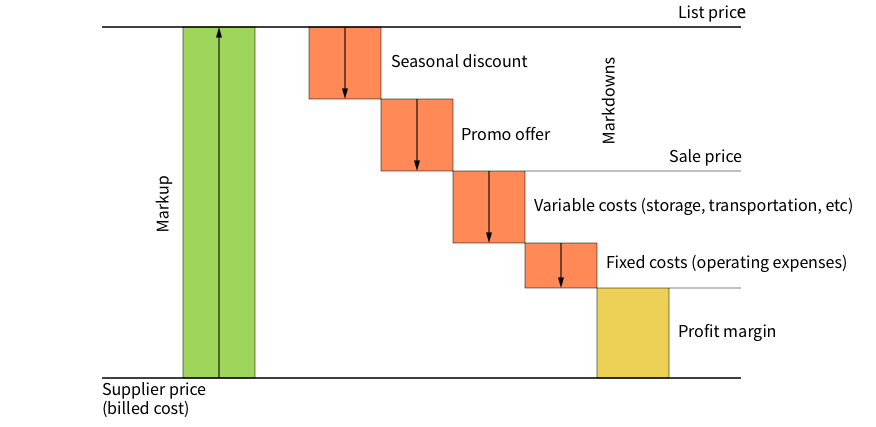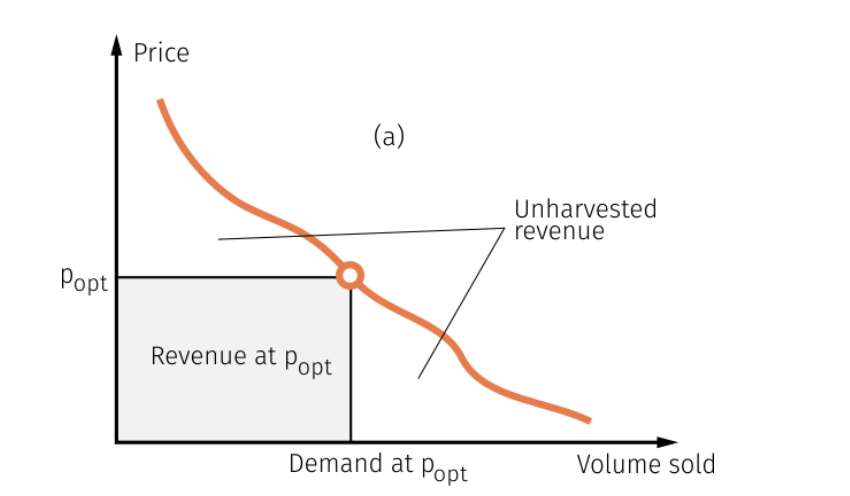How Zero-shot Object Detection Changes Computer Vision Tasks in Business
Discover the capabilities of zero-shot object detection, which enables anyone to use a model out-of-the-box without any training and generate production-grade results.

Revenue generation is a vital part of any type of business. Of course, you’ll need to cover your expenses as well as achieve a specific level of revenue for your business to grow and thrive. But how do you price your goods and services? Do you use fixed prices, observe those of your competitors, or a combination of both?
The truth is that you will need a higher-level pricing strategy for today’s competitive marketplace as well as flexibility to make changes when they’re needed. Price optimization and revenue management are the most prominent aspects that any business needs to address.
Inserting machine learning into the mix not only makes both tasks easier but more efficient for any company. Price optimization with machine learning allows a company to have real time pricing adjustments and easily respond to the marketplace to manage product campaigns accordingly and reach their goals.
Used by a range of industries, dynamic pricing is the action setting your product or services pricing based on the current state of the market demands. With the huge amount of data generated by their customers via analytics and social media, companies can use that data to adjust their pricing in real time with dynamic pricing. Using the data allows companies to understand the current state of their market, make adjustments as needed, and maximize their opportunities to increase their revenue.
Done correctly, each of these pricing techniques can benefit a company’s revenue.

Pricing can be automated as needed, either partly or completely, depending on goals of a product campaign. Dynamic pricing tools use internal and external factors to set prices according to the company’s pricing strategy. The tools may use KPI’s, inventory, demand, and prices from competitors to determine pricing in line with the company strategy.
Businesses that can actively respond to market demand, develop brand awareness with its pricing decisions, and use inventory wisely has a better chance of survival despite current market conditions. Dynamic pricing helps a company increase its competitiveness and recover from a bad move. For example, an airline can recuperate from a lack of sales during periods of low demand or just prior to an impending departure by having a sale on tickets for a particular flight or flights.
The flip side of dynamic pricing is that it can also create customer ire.
Most customers consider pricing changes normal when they are looking for and booking flights and hotel accommodations in their intended destination. Ironically, they don’t feel the same about car rental companies and retail.
A prime example of a customer backlash target is Uber. Their dynamic pricing model changes the cost of a ride according to demand. Customers are warned via the Uber app about price surges, and are given the option to wait until the surge has passed and rates go back down to normal. These surges occur during high-demand periods when more people are looking for a ride—such as New Year’s Eve.
One widely reported example from Edmonton, Canada, saw an Uber fare total over $1,100 on a 20-minute trip on New Year’s Eve with a group and multiple stops. Customer Matt Lindsay had used Uber before, and understood the “surge pricing.” Lindsay and his group had also been drinking, and didn’t fully understand how the fare was calculated. Despite the warning from the driver, he accepted the surge rate. Customers tend to complain online and on social media about their bad experiences.

One of today’s market characteristics is price transparency. With just a few clicks, anyone can find the merchant that provides goods and/or services for a lower price. Due to strong competition, many companies are quick to drastically cut their prices to rival their competitors. In doing so, they may create a “race to the bottom” by intentionally charging less and decreasing their own profit margins. Ultimately, the company loses the price war they’ve started on their own.
Data-driven decisions on pricing are a better way to handle these challenges. Many tools for dynamic pricing can monitor data and do analyzations on things like:
The tools can also help determine and indicate price limits on everything.
There are currently two types of dynamic pricing software solutions available.
Rule Based — This form of software works strictly from a knowledge base built on “if-then” rules of a problem and based on available knowledge. When the rule set detects a specific connection of data fields, a part of the model called an “inference engine” defines the relationship between known facts and the rules. The software then acts according to an executed rule. These systems rely on the knowledge that’s built into the software to respond to the current state of their environment.

These rule-based solutions for dynamic pricing require rules to be written to meet the business needs of a specific organization. Because they are inflexible, the rule-based system can’t make changes or additions to respond to environmental changes, or events that weren’t previously accounted for. When new items are added to inventory, seats are added to a plane, or rooms in hotels, the software will require increasingly additional maintenance. This can come in the form of new rules added, modifications of existing rules, and guarding against duplicate rules while aligning with the company’s current goals for business. It also means that rule-based systems are unable to reach the performance of machine learning systems, outside of simple problems. This lack of flexibility makes rule-based systems a less-desirable option for dynamic pricing.

Machine Learning has become the modern solution to dynamic pricing, because of its ability to adjust on the fly and reoptimize based on variables like inventory levels, number of add to carts, and product based sentiment analysis. Deep neural networks allow you to understand relationships between the different data fields related to your product, and forecasting long term outcomes of your product sales. The nice part about using ML is these solutions will continue to optimize and adjust over time, saving you time relative to rule based solutions. Predictive analytics allow you to input variables you want to see, like a final revenue result or inventory levels at 0, and forecast out how you’ll get there given your current price optimization model.
Both AI and ML permit a widespread analysis of the product data, giving a more predictable outcome. You’ll find features like these in pricing software that includes machine learning pricing:

Most software incorporates these and more into the pricing decisions.

Dynamic pricing isn’t necessarily about just changing prices. The directive of any company is to find a price where demand and supply meet so that both the customer and the provider agree that the set price is a fair one at any point. Here, the reference point is the customer’s willingness to pay. Therefore, dynamic pricing can be used for both pricing optimization and revenue management. However, the individual strategy will always differ by the industry and the goods and/or services they provide. Let’s discuss how the airline industry handles dynamic pricing.
Revenue management’s primary objective is to sell the correct product to their interested customers at the right time, through the right channel, and at a reasonable cost for both parties. This best applies to businesses such as airlines and hotels with a stable and inventory that customers reserve. Revenue management practices originated in the travel industry. Everything is “perishable.” That is, they can be reserved in advance but will lose their value at another point in the future.
Inside of pricing optimizations, companies predict the degree of consumer demand changes with the costs of products and services through different delivery channels. It’s primarily used to uncover how sensitive the customers are to changes in prices for goods that usually cost about the same. Retail is the primary user of pricing optimization since the price is one of the primary brokers of every purchase.
Here, we’ll go into detail about dynamic pricing as used by transportation, hospitality and eCommerce businesses.
Uber, Lyft, and other transportation network companies (TNCs) have become strong competitors to taxi companies and other transport authorities around the world. Since 2015, public transit companies in the US alone have been losing passengers regularly. A report on transit trends from the University of Kentucky shows that within one year after TNCs enter a local marketplace, municipalities can reasonably expect that bus ridership will decrease by 1.7%, and heavy rail (where available) will decrease by 1.3%. An estimate by the authors states that ridership will likely decrease by 12.7% after eight years, because the more people use rideshares, the stronger they become.
The rideshare companies seek to maximize revenue from their increasing driver and rider population. Uber’s “surge pricing” is an example of dynamic pricing that manages capacity constraints, and changing its pricing to ensure an equilibrium of demand and supply. Uber ensures that there are available cars by raising its prices when needed by pricing some passengers out and making driving more appealing to the drivers themselves..
Uber uses machine learning for demand forecasting the number of ride requests they will receive at any point, as well as where and when. During holidays, concerts, sporting and other events, the company pays attention to demand prediction.
When there are more customers in a neighborhood than there are drivers, Uber enables a multiplier (such as 1.8 or 2.5) on every fare. Holidays like New Year’s Eve, during public events, or even on Friday and Saturday nights may see an increase for demand. Using multipliers, the Uber fares are updated in real time. The multiplier’s value depends on the number or scarcity of available drivers. Riders are notified of the increased pricing, known as “surge pricing,” and are required to agree with it before requesting a ride.
Seasonal changes also affect Uber’s multipliers. Because events like New Year’s Even only occur yearly, researchers have rather sparse datasets. To resolve the data sparsity problem, researchers use matrix factorization and sparsity regulators to improve results.
The resulting models offer solid results for predictions using time series data, or data with observations from regular intervals, and uses numerical values for observations. The specialists worked with five-year historical data from daily trips completed across the US, which also helps understand what users are willing to pay.
This chart shows both predicted and actual completed trips in one city over 200 days.

With the ability to examine multiple variables that impact and affect demand, Uber sets its prices to correspond to the market’s current state at any time to optimize operations.
With online distribution and transparent pricing becoming the norm, static hotel pricing became economically ineffective. InterContinental and Hilton began experimenting with dynamic pricing in 2004, and Accor began to do the same thing a year later. Starwood and Hyatt also implemented flexible pricing for some of their corporate clients shortly thereafter.
The next stage of dynamic pricing is machine learning-based pricing. Hotels utilize machine learning to support their inventory management and pricing decisions by gleaning information extracted from huge amounts of data from both internal and external sources.
Starwood Hotels, which became part of the Marriott family in 2016, utilizes data analytics to match current demand with room pricing. In 2014, the company introduced its own Revenue Optimization System (ROS) after investing more than $50 million into its development.
ROS incorporates both internal and external data for analysis in real time, using the results for demand forecast and suggesting optimized room rates. Their internal data can include:
Pricing recommendations are affected by reservation behavior and customer type. The types are generally the single or transient traveler, or one person from a bigger group that’s attending an event at the venue.
The company’s revenue management software also considers weather data, competitor pricing, account climate, booking patterns from other sources, and checking for public events such as concerts that may be happening in the area of the particular property.
Tying room rates to fluctuating market conditions let the hotel chain allocate inventory effectively while maximizing revenue. Hilton’s machine-based system has helped the chain increase forecasting demand accuracy by 20% since 2015.
More and more, both online and brick-and-mortar stores are using AI and ML to respond to demand changes with high accuracy.
Amazon made more than 2.5 million price changes everyday in 2013, according to Profitero, a company that offers insights into eCommerce. By comparison, Best Buy made nearly 53,000 pricing changes, and Walmart made nearly 55,000 changes just during November that same year.
Business Insider also reveals that 72% of e-commerce retailers plan to invest in AI and machine learning this year.

Harvard and MIT researchers have used machine learning in a project to address price optimization for fashion retailer Rue La La.
Rue La La is an online-only company specializing in designer clothing, accessories, home and other goods. The store organizes their sales “events” in the form of discounts from one to four days. The discounts are on similarly styled items in a collection, called “styles.”
“First exposure styles” are those sold during the event that merchants did not need to plan for a subsequent sales event. The sale of these items accounted for the majority of the company’s revenue, so management needed software to support their pricing choices and forecast the demand.
Most of the “first exposure” items sell out before the end of the sales period. Therefore, it’s possible to raise the prices on them and still have a high sell through. Conversely, other first exposure items sell less than half of the inventory before the sales period ended. This is an indicator that the initial price might have been too expensive. The researchers explain that by using these observations to develop their price decision supporting tool, Rue La La can easily use the data available to maximize their revenue from first-exposure sales.
The researchers’ project was completed in two stages. In the first stage, they created a model for demand prediction to be used with first exposure items.
The model training utilized sales transactions in an 18-month period, (beginning of 2011 through mid-2013) using time-stamped item sales during certain individual events. The specialists stated that the data included the event start date and time, the length of the event, the initial inventory of each item, as well as the sold quantity and price of each SKU involved.
Additionally, Rue La La shared such product related data as brand, size, color, MSRP, and each item’s hierarchy classification. These goods were organized so that each item from all sizes belongs to a:
All of these features, including the price of each style, discounts, and similar prices for competing styles, are connected with price. The demand for a particular style will depend on the prices for competing styles, which are a shopper’s reference price. The reference price denotes the price that a customer is ready and willing to pay for something.
In the second stage, the researchers utilized the data from demand prediction for a price optimization model for maximizing revenue. They implemented the last algorithm to solve the problem of multi-product price optimization, and also accounted for the reference price effects implemented in the pricing decision support tool the company used in its operations daily.
This experiment with Rue La La lasted six months and involved 6,000 products. The researchers measured the market and financial impacts of the tool for styles in multiple price ranges. The decision software used in the Rue La La experiment led to a revenue increase of 10%, which had a direct impact on the company’s profit margin.

Commercial off-the-shelf (COTS) products are a great place to start. But if the products don’t have some of the features your company needs, you can always build one yourself. However, this will require considerable resources for product development, including:
Consider these additional factors when implementing dedicated solution for your dynamic pricing strategy.
The first thing to consider is whether your company’s demand is “elastic” or “inelastic,” if dynamic pricing would be a good fit and whether customers will pay a dynamic price for your product or services. An “inelastic” price is one that leads to a smaller drop by percentage in demand that’s greater than the increase in price.
One example of inelastic pricing is the daily price fluctuations of water, electricity, or gasoline. In the meta-analysis Review of Income and Price Elasticities in the Demand for Road Traffic, the authors Joyce Dargay, Phil Goodwin, and Mark Hanly concluded that if gasoline’s real price increases by 10% and stays there, the consumption volume drops by 2.5% within a year, and in the long run will be reduced by more than 6%.
But when consumers are able to find quickly and easily find alternate products or services that increased in price, the demand is considered “elastic.” One example is a pair of jeans from a specific brand.
Any system built and centered around a machine-learning model requires data as an integral component. To train a model for optimal performance, you’ll need clean data related to your product or SKU. Lower quality data requires more feature engineering and sparsity reducing to make the data useful.
The dataset should have as many unique data points as it can to act for as many variables as possible. This should include historical prices for each product or service and information regarding demand by consumers, along with previously mentioned internal and external influences. Competitor pricing data is also important for informed decision-making. In an April 2018 study by Retail Systems Research, 85% of the polled retailers admitted that their greatest challenge is keeping abreast of their competitor’s prices.
Customer price sensibility data can also be an advantage, since experimentation with prices can help a company to understand price sensitivity of a range of products.
It’s vital to identify minimums on prices to ensure that margins stay at a preselected rate as well as maximums to keep prices matched with brand identity. Management consulting company McKinsey suggests that retailers include boundaries to prevent pricing that’s much higher than their competitors. Most modern solutions include a deep neural network based algorithm that controls the price ceiling and floor relative to competitors.
One solution is to let users indicate the time frames where they need price adjustments. Perfect Price’s founder states that their tool can automatically update prices. Depending on the application, it can make adjustments in minutes, on a weekly basis, or monthly.
One way to avoid backlash from customers is to review the outputs from a dynamic pricing model. Using A/B testing on a small subset of your customer base can show you how customers will react in real time.
It’s also necessary to monitor adapting features (here, pricing factors) and model performance. The model should be updated at regular intervals, or it could become outdated. Online retailers may see their model outdated by variables such as fashion trends. So it’s important to create and implement a repeatable process to update your model quarterly, yearly, or however often it’s needed. Model performance testing is planned when data scientists observe how fast data becomes outdated.
An effective price optimization solution is becoming vital to compete today. Companies with online stores realize that it is an extremely competitive environment where customers can quickly compare prices for goods and services with a simple search, even with grocery shopping. It’s easy for them to select the offer that matches their purchasing power and their needs.
Dynamic pricing can be utilized for both pricing optimization and revenue management, especially where inventory is limited and margins need to be increased. Here, machine learning lets companies execute large-scale dynamic pricing while allowing for hundreds, and maybe thousands, of pricing factors. These factors can include showing specific prices to different customer divisions and their matching readiness to pay as well as elasticity in prices.
Want to find out how much your margins can go up with machine learning based price optimization?, contact us today. We’ll be happy to discuss how to incorporate AI and machine learning into your business to increase efficiency and profitability.